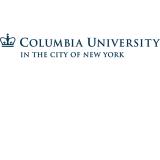Impact of Anthropogenic Warming on an Emerging North American Megadrought
Severe and persistent 21st-century drought in southwestern North America motivates comparisons to medieval megadroughts and questions about the role of anthropogenic (human-caused) climate change. This webinar is based on research that used hydrological modeling and new 1,200-year tree-ring reconstructions of summer soil moisture to demonstrate that the 2000–2018 southwestern North American drought was the second driest 19-year period since 800 CE, exceeded only by a late-1500s megadrought.
The megadrought-like trajectory of 2000–2018 soil moisture was driven by natural variability superimposed on drying due to anthropogenic warming. Anthropogenic trends in temperature, relative humidity, and precipitation estimated from 31 climate models account for 47% of the 2000–2018 drought severity, pushing an otherwise moderate drought onto a trajectory comparable to the worst southwestern North American megadroughts since 800 CE.



